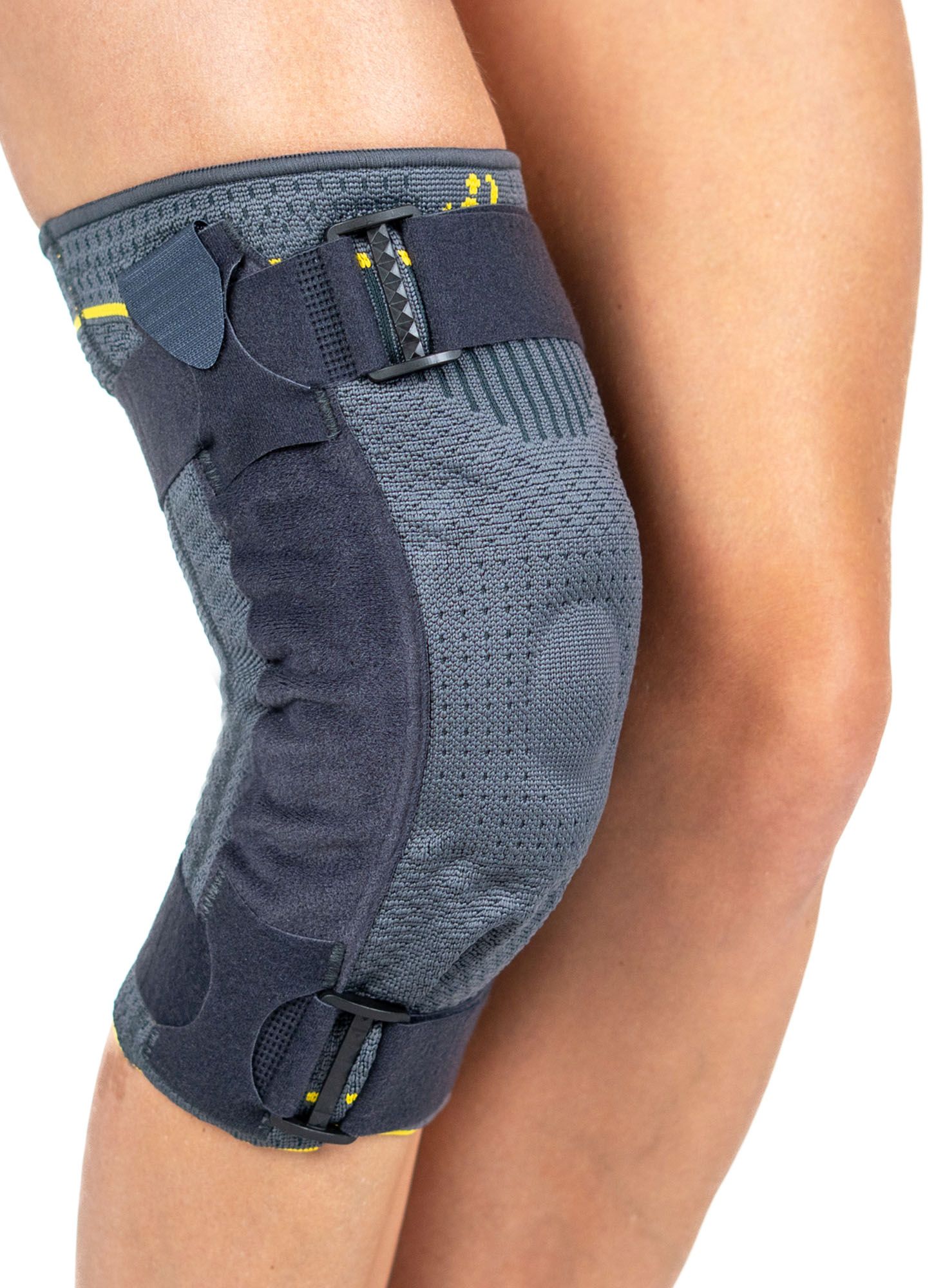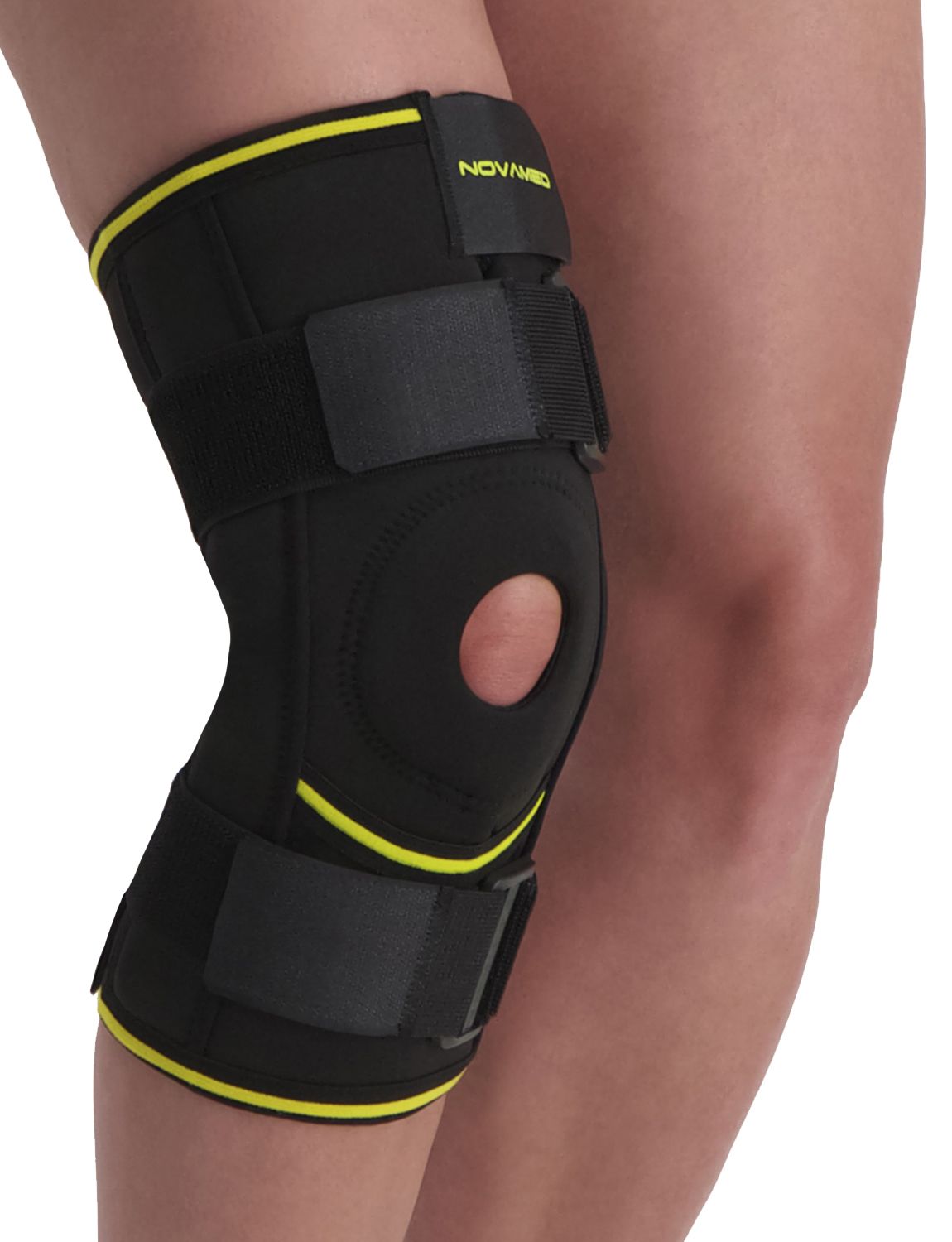Hypermobility
Hypermobility in the knee is a hereditary condition. Due to changes in the connective tissue, the ligaments develop more elastic properties. As a result, the ligaments stretch more under pressure, often causing the joints to hyperextend. This overstretching can lead to various symptoms that should be treated as soon as possible. Want to learn more about treating knee hypermobility? Read on to find out how to relieve these symptoms.
What is hypermobility in the knee?
With hypermobility in the knee, your ligaments and tendons are often too flexible. The joints no longer receive adequate support because of the overstretching. Hypermobility occurs in 4 to 7% of the Dutch population, depending on gender, ethnicity, and age. This is also referred to as hyperlaxity. The condition is common among young people, women, and people of Asian descent.
What are the symptoms of hypermobility in the knee?
There are various symptoms that can indicate you are hypermobile in the knee. Hypermobility can affect your ability to perform daily tasks. The sooner you can identify the symptoms, the quicker you can begin treatment and resume normal activity. Symptoms of knee hypermobility include:
- Pain
- Instability
- Overuse of muscles and joints
- Impact on daily activities
- Decline in sports performance
What are the causes of hypermobility in the knee?
The exact cause of hypermobility in the knee is unknown. However, several contributing factors may cause the knee to become overly flexible. A doctor can examine the knee and determine whether any of these factors are involved. Knee hypermobility may be caused by the following:
- Heredity and genetic predisposition
- Lifestyle and physical activity
- Age and growth in young individuals
How is an overly flexible knee diagnosed?
A doctor can best determine whether you have hypermobility in the knee. In some cases, it may be caused by Ehlers-Danlos Syndrome (EDS), a condition in which the connective tissue in the knee has not formed correctly. Your GP may refer you to a specialist for further evaluation.
You can also perform several exercises to check for signs of hypermobility in the knee:
- When you straighten your leg, your knee hyperextends
- You can touch the ground with your palms while keeping your knees straight
If you're unsure, it's advisable to consult a physiotherapist. A physiotherapist can create a treatment plan to help reduce knee hypermobility.
Treatment options for hypermobility in the knee
Both non-surgical and surgical options are available for treating knee hypermobility. Your GP will typically assess which option is most suitable for your situation. Here’s what can be done to reduce hypermobility:
Non-surgical treatments
If you recognize any of the above symptoms and suspect knee hypermobility, you can try the following methods. It's important to treat the knee to reduce pain and instability:
- Physiotherapy – A physiotherapist will recommend exercises to improve the stability and strength of the knee
- Braces and support
Surgical treatments
If you suspect there is more going on with your knee, consult your GP for further advice. It may be that your knee’s connective tissue didn't develop properly at birth or that you have inherited hypermobility. Your doctor can help guide you through a treatment plan.
How can you prevent hypermobility?
There are several preventive measures you can take to reduce the risk of developing hypermobility. Making small adjustments to your diet and lifestyle can significantly help prevent knee pain and instability. It's important to strengthen the muscles around the thigh to help stabilize the knee joint. Additional ways to strengthen the knee and prevent hypermobility include:
- Maintaining proper posture and movement techniques
- Eating fiber-rich foods to protect the cartilage in the knee
How long does recovery from knee hypermobility take?
Your doctor or physiotherapist can estimate how long it will take for the knee to fully recover. If the hypermobility cannot be resolved through self-care, recovery can take several weeks to months. Do you recognize the symptoms? Don’t wait to start treatment. At Podobrace, we offer a range of knee braces designed to support the knee and accelerate recovery. Have questions about which brace is most suitable? Contact our team of specialists. We’re happy to help you find the right support for your symptoms.

Morsa GenuBerg M4 Hinged Knee Support

Novamed Lightweight Hinged Knee Support

Novamed MAX Hinged Knee Support with Crossed Straps

Dunimed Knee Support Wrap

- Physiotherapist
- Sports podiatrist
- Manual therapist
- Podopostural therapist
- Myofascial dry needling specialist


